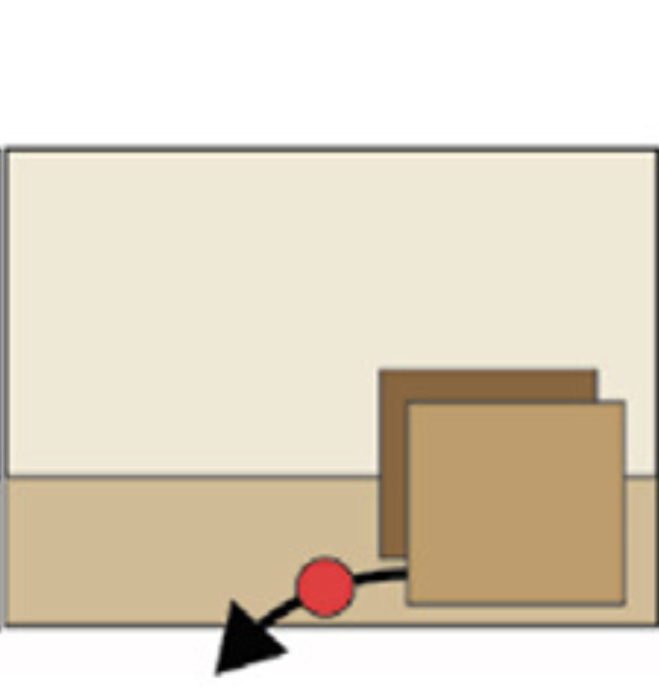Click here and press the right key for the next slide.
(This may not work on mobile or ipad. You can try using chrome or firefox, but even that may fail. Sorry.)
also ...
Press the left key to go backwards (or swipe right)
Press n to toggle whether notes are shown (or add '?notes' to the url before the #)
Press m or double tap to slide thumbnails (menu)
Press ? at any time to show the keyboard shortcuts
Automatic Mindreading in Adults

Automatic Mindreading in Adults
[email protected]
Is adult humans’ belief-tracking automatic?
Sometimes it is not
(Apperly, Back, Samson, & France, 2008; Apperly et al., 2010; Wel, Sebanz, & Knoblich, 2014)
and sometimes it is
(Kovács, Téglás, & Endress, 2010; Schneider, Bayliss, Becker, & Dux, 2012; Wel et al., 2014; Edwards & Low, 2017; Edwards & Low, 2019)
How could belief-tracking ever be automatic?
other domains : more automaticity is a consequence of simpler models
- physical cognition (Kozhevnikov & Hegarty, 2001)
- reasoning (Gilovich, Griffin, & Kahneman, 2002)
- mindreading ???
signature limits generate predictions
Hypothesis:
Some automatic belief-tracking systems rely on minimal models of the mental.
Hypothesis:
Infants’ belief-tracking abilities rely on minimal models of the mental.
Prediction:
Automatic belief-tracking is subject to the signature limits of minimal models.
Prediction:
Infants’ belief-tracking is subject to the signature limits of minimal models.

Edwards and Low, 2019 figure 1

Edwards and Low, 2019 figure 1

Edwards and Low, 2019 figure 1

Edwards and Low, 2019 figure 1

Edwards and Low, 2019 figure 1

Edwards and Low, 2019 figure 1

Edwards and Low, 2019 figure 1

Edwards and Low, 2019 figure 1



Edwards and Low, 2019 figure 1

Edwards and Low, 2019 figure 4 (part)

Edwards and Low, 2019 figure 1

Edwards and Low, 2019 figure 2

Edwards and Low, 2019 figure 1

Edwards and Low, 2019 figure 4 (part)
signature limits generate predictions
Hypothesis:
Some automatic belief-tracking systems rely on minimal models of the mental.
Hypothesis:
Infants’ belief-tracking abilities rely on minimal models of the mental.
Prediction:
Automatic belief-tracking is subject to the signature limits of minimal models.
Prediction:
Infants’ belief-tracking is subject to the signature limits of minimal models.
How could belief-tracking ever be automatic?
other domains : more automaticity is a consequence of simpler models
- physical cognition (Kozhevnikov & Hegarty, 2001)
- reasoning (Gilovich et al., 2002)
- mindreading ??? (Edwards & Low, 2017; Edwards & Low, 2019)[stop ??? from removing a line]

of mindreading.
Q1
How do observations about tracking support conclusions about representing models?
Q2
Why are there dissociations in nonhuman apes’, human infants’ and human adults’ performance on belief-tracking tasks?
signature limits generate predictions
Hypothesis:
Some automatic belief-tracking systems rely on minimal models of the mental.
Hypothesis:
Infants’ belief-tracking abilities rely on minimal models of the mental.
Prediction:
Automatic belief-tracking is subject to the signature limits of minimal models.
Prediction:
Infants’ belief-tracking is subject to the signature limits of minimal models.
reidentifying processes:
same signature limit -> same process



Low et al, 2014 figure 2
| non-A : location | non-A : identity | A-task : location | A-task : identity | |
| response dominated by | automatic | automatic | nonauto | nonauto |
| infants, chimps | pass | fail | fail | fail |
| ordinary adults | pass | fail | pass | pass |

of mindreading.
Q1
How do observations about tracking support conclusions about representing models?
Q2
Why are there dissociations in nonhuman apes’, human infants’ and human adults’ performance on belief-tracking tasks?
appendix
motor mindreading
Why do others’ false beliefs ever influence reaction times?

Costantini et al, 2010 figure 1b


Costantini et al, 2011 figures 3,4

Why do others’ false beliefs ever influence reaction times?
Prediction: constraining others’ action possibilities will reduce task-irrelevant effects of their false beliefs on your reaction times.









Prediction: limiting motor processes will interfere with fast belief-tracking.

(Low, Edwards, & Butterfill, 2020, p. figure 1)



(Low et al., 2020, p. figure 2)

(Low et al., 2020, p. figure 3)